Two Roses
by Walt Anderson
In the chaparral and pinyon-juniper woodlands of much of Arizona grow two shrubby members of the rose family: Cliffrose (Purshia stansburyana) and Apache Plume (Fallugia paradoxa). When the plants are not in bloom, some folks confuse the two species, but there are many distinctions, some of which I will mention here.
Apache Plume can form dense stands along dry washes, while Cliffrose tends to prefer uplands, but occasionally you can find them right next to each other. Both do well in disturbed sites along roadways and old railroad grades. They are drought-resistant and capable of blooming even in these wicked drought years, when annuals rarely dare to show their pretty little faces. They often bloom in spring and again in the summer monsoons.
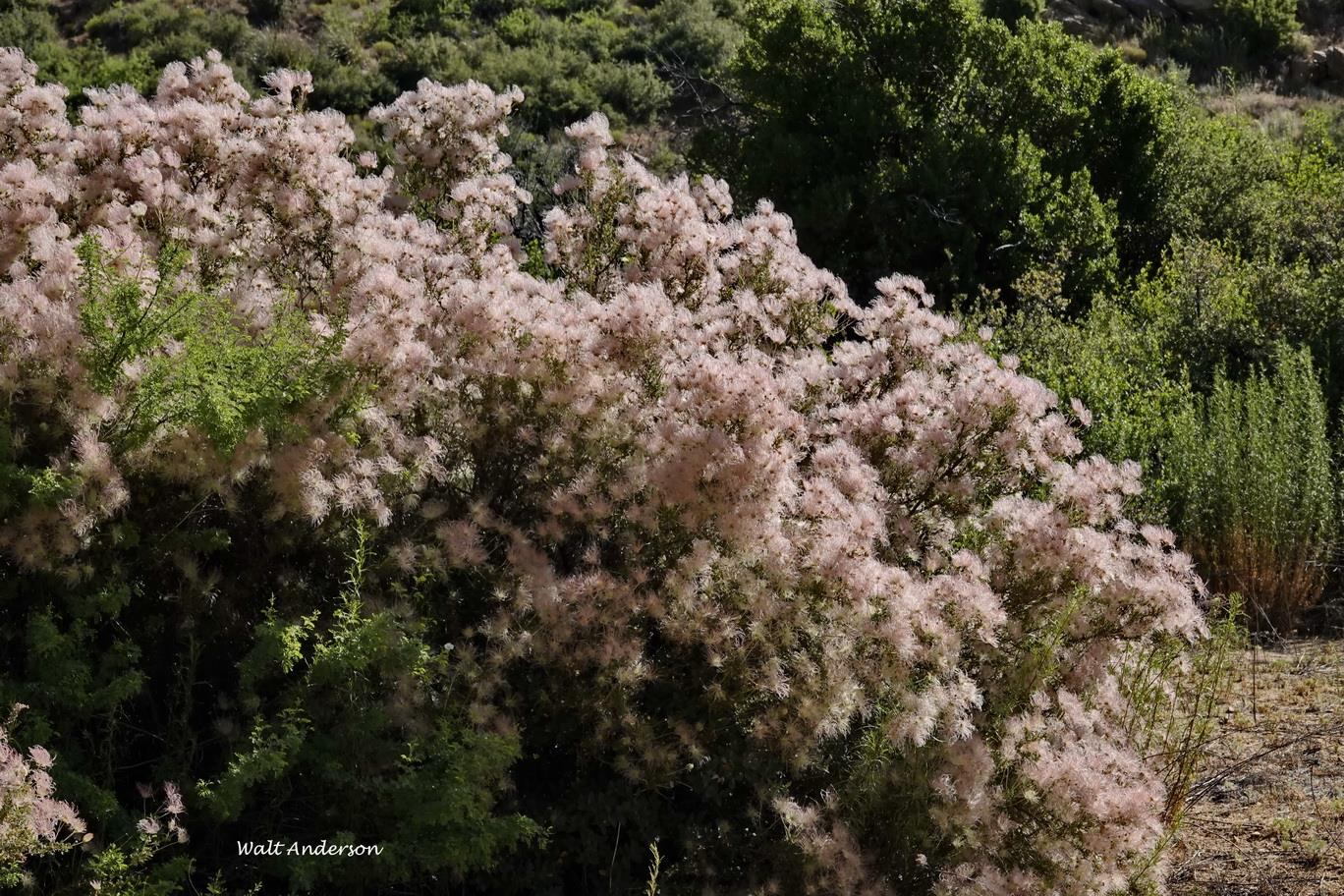
Apache Plume is a stunner when its pinkish seedheads mature.
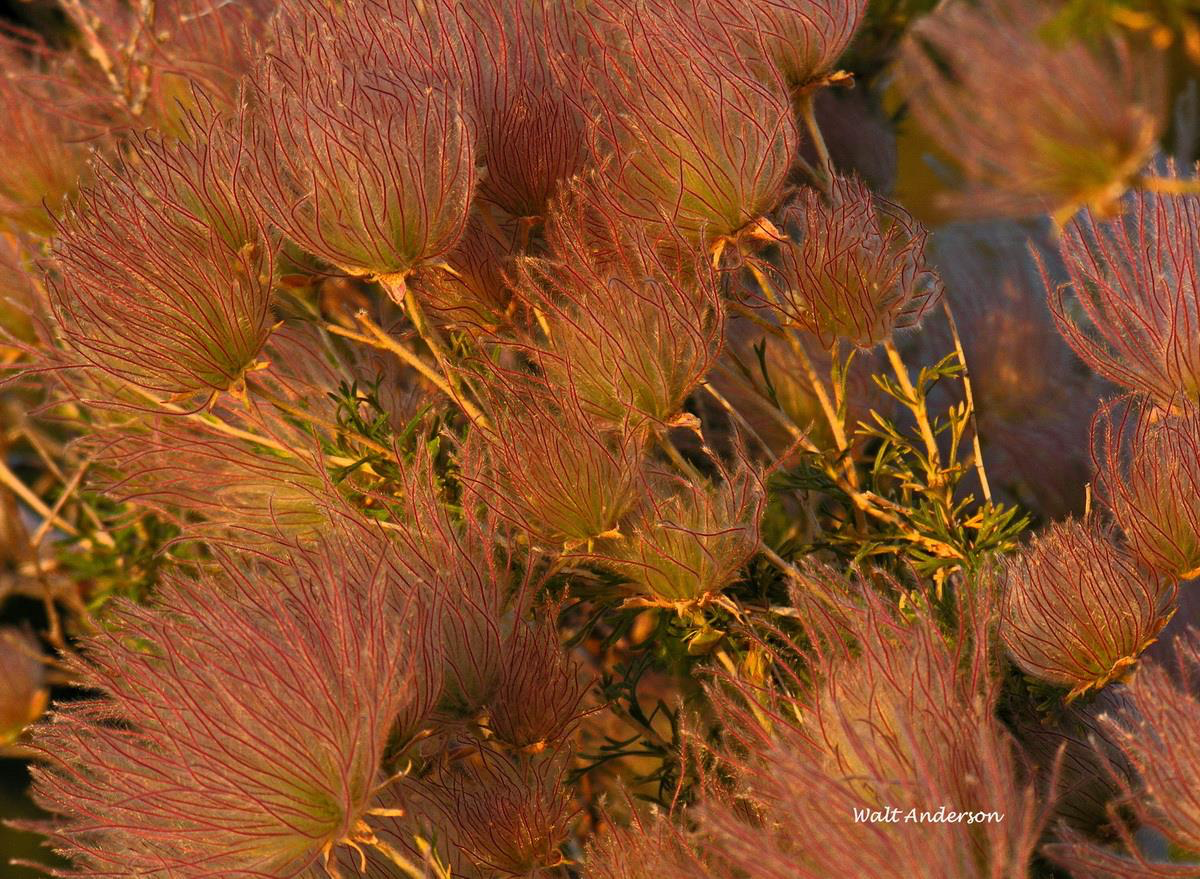
Because of its beauty, Apache Plume is often planted as an ornamental. The evergreen shrubs require little water, and they can brighten our days for months in most years. This is an excellent choice for a garden of water-miser native plants.
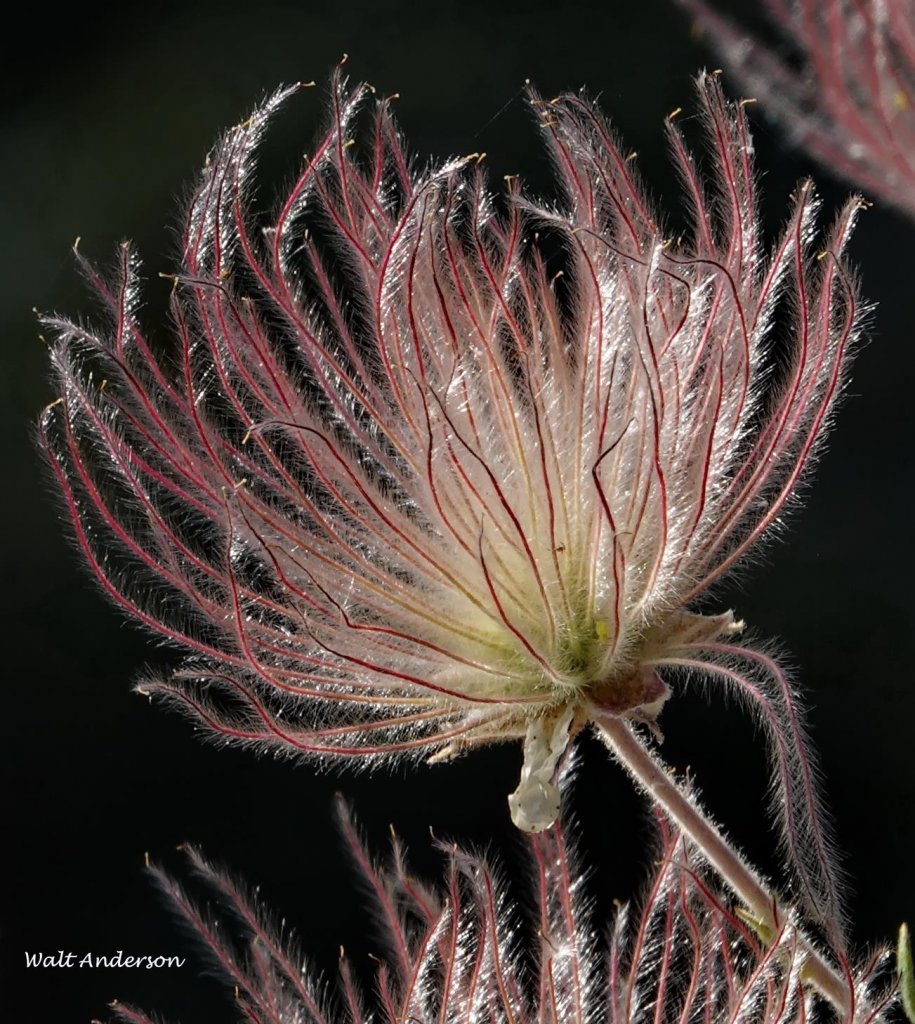
The Apache Plume has style! Actually, a lot of styles that become modified after pollination occurs to create colorful “feather dusters” of seeds (achenes) that can be carried aloft and away by the wind. Those tasty achenes can attract birds, and I enjoy watching colorful yellow- and- black Lesser Goldfinches foraging, like mobile ornaments, in a fruiting shrub.
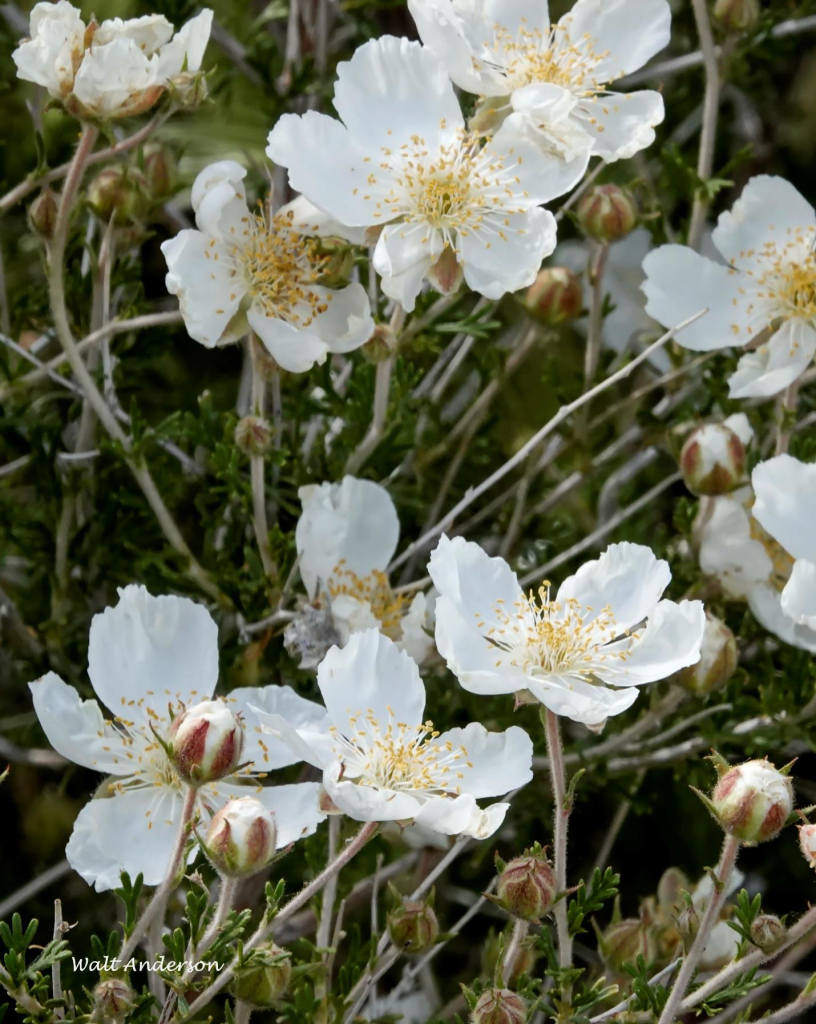
Five petals cup around abundant stamens. Each Apache Plume flower is suspended on a long stalk or peduncle that is persistent even after the flowers are gone. You can see how similar these are to the simple flowers of its cousin, the wild rose, but without the prickles.
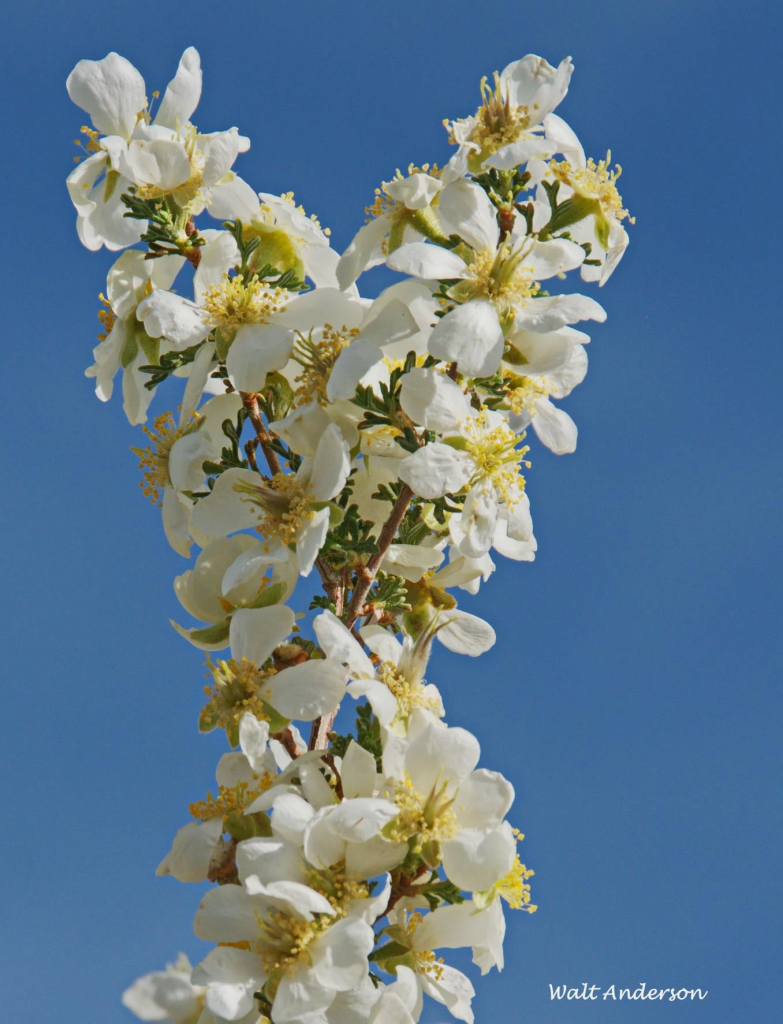
In contrast, the white-to-creamy flowers of Cliffrose hug the twigs with short stalks. The leaves are blunter, dotted with resinous glands. Taste a leaf, and you’ll understand why early settlers often called this “quinine bush” for its bitter taste. That doesn’t stop deer from browsing it in winter, often creating sculptured topiary of sorts.
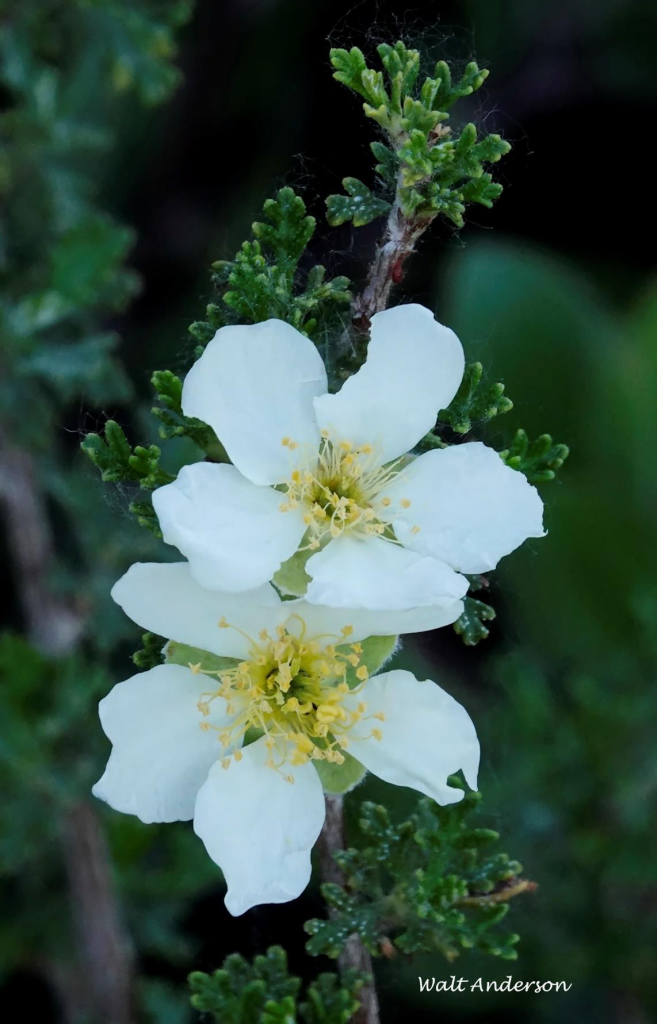
Cliffrose and Apache Plume are “microphyllous,” adapted to deal with heat dissipation and moisture loss by having tiny, multi-lobed leaves, like miniature hands. If you look closely and use your imagination, especially if it is windy, you may see thousands of microwaves.
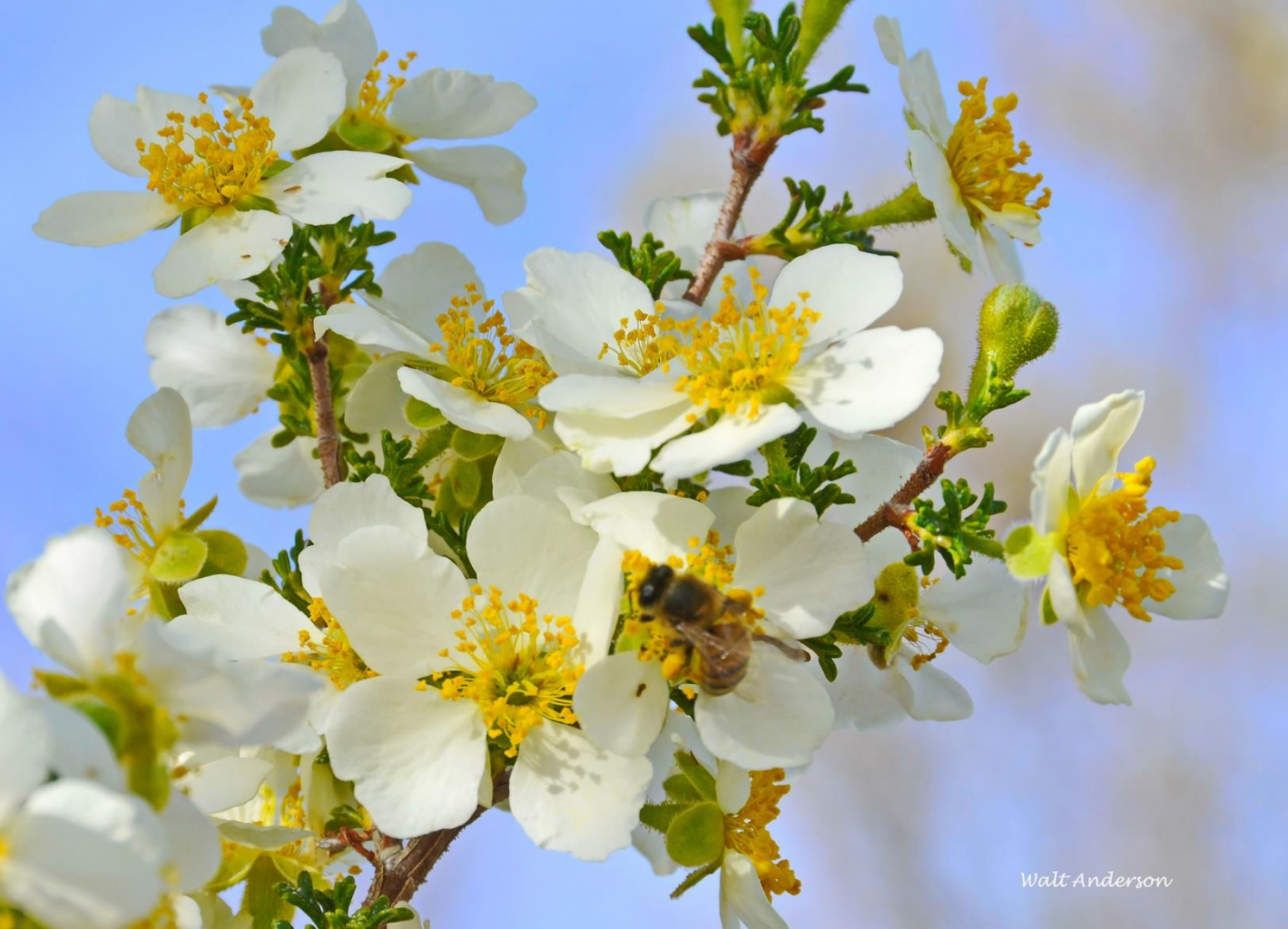
A single cliffrose can be adorned with thousands of showy flowers, making each tree or shrub a massive target for potential pollinators like this honeybee. Moreover, the flowers emit a wonderful fragrance that carries well on the breeze, drawing me closer even though I am an appalling (a pollen?) pollinator.

If the insects have done their work, seeds (achenes) develop feathery plumes about two inches long. Cliffrose produces 5-10 achenes per flower, while Apache Plume goes all out with 20-50 or more, making it the showier plant while in fruit.

The feathery plumes aid in dispersal by wind, and once grounded, they can twist in the wind and help drill the sharp seed into the ground. This is very similar to the dispersal strategy of another rose family member, the Mountain Mahogany.
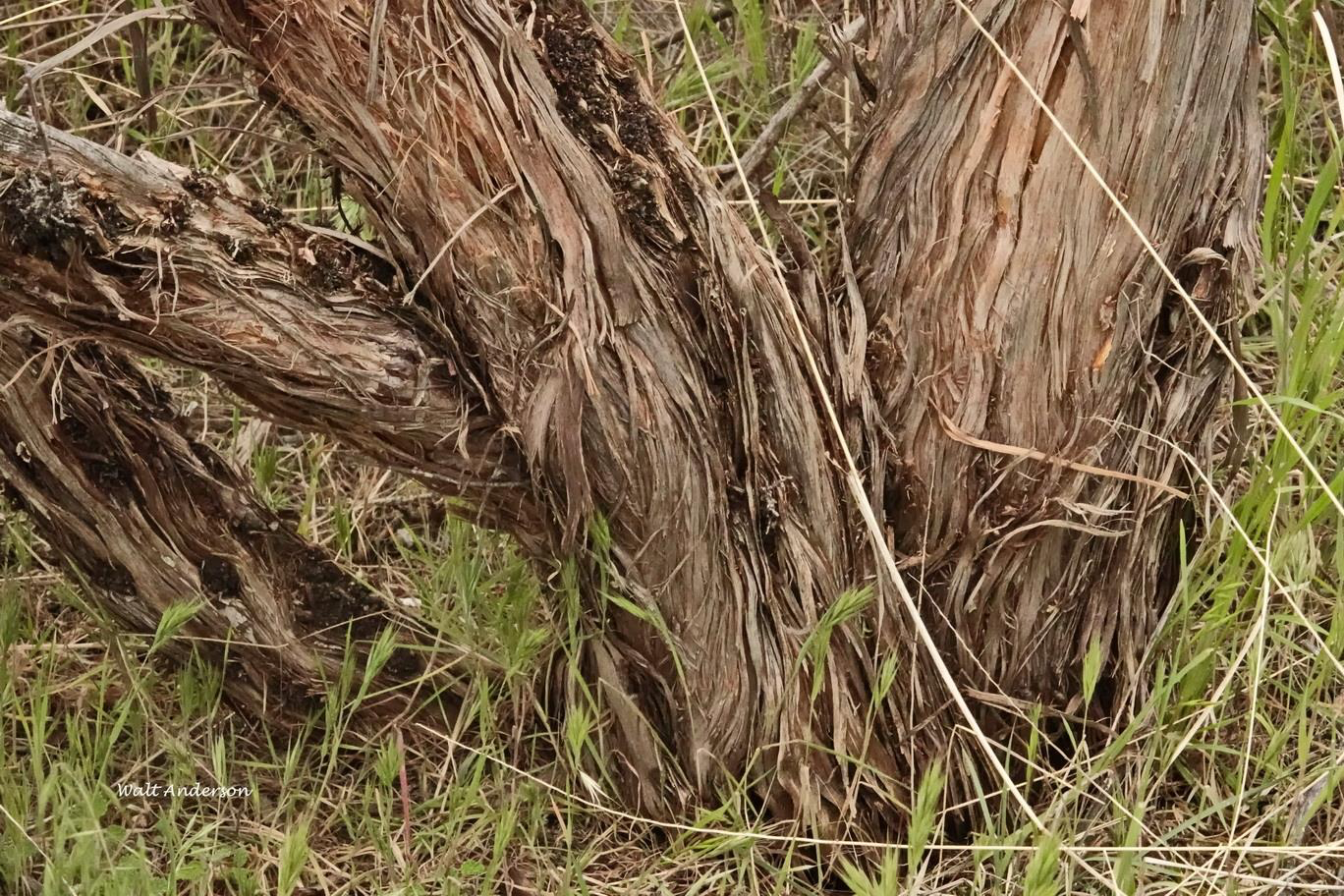
Cliffrose often becomes treelike with age, with shreddy bark that various Native American tribes used for mats, cordage, clothing, sandals, and padding for cradleboards. Straight stems were used for arrows, and foliage could be mixed with juniper parts to create dyes
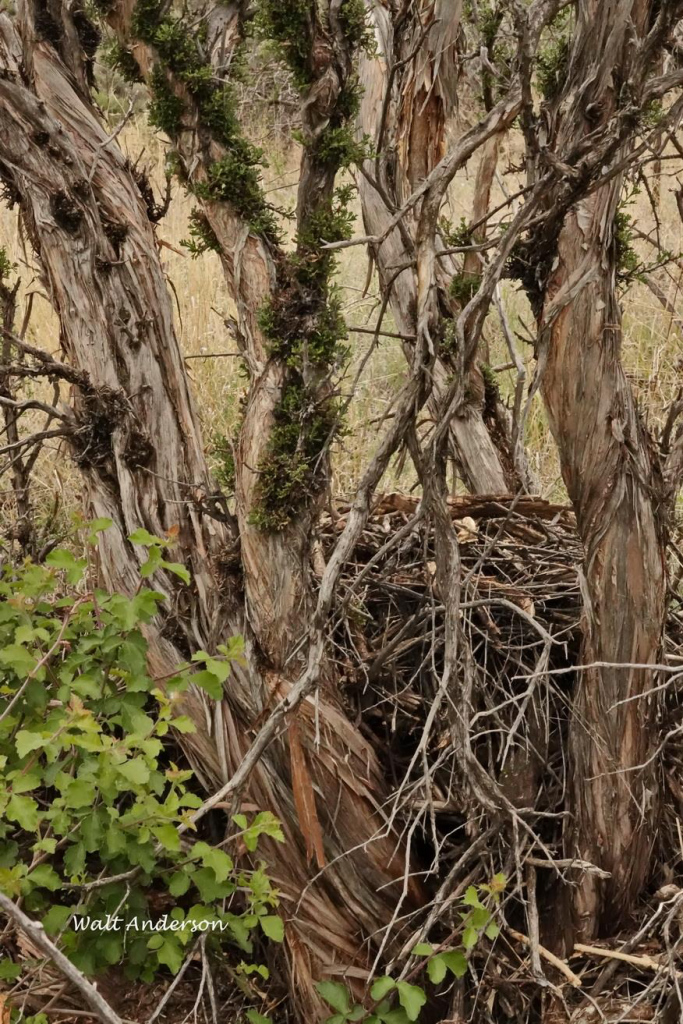
A woodrat has chosen this Cliffrose to support its massive nest. While typically shrubby, some Cliffroses aspire to greater heights, towering up to 20 feet.
Cliffroses require decades to reach this stature, and it pains me when developers come in and flatten everything with mass grading instead of working with the landscape and its native plants. We should demand that developers treat the land with more respect.
